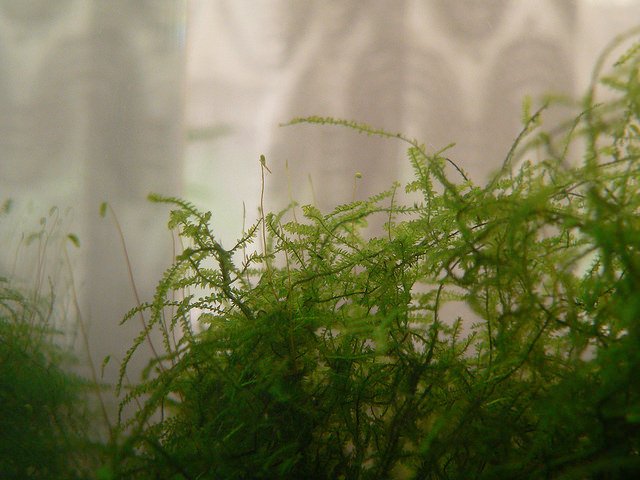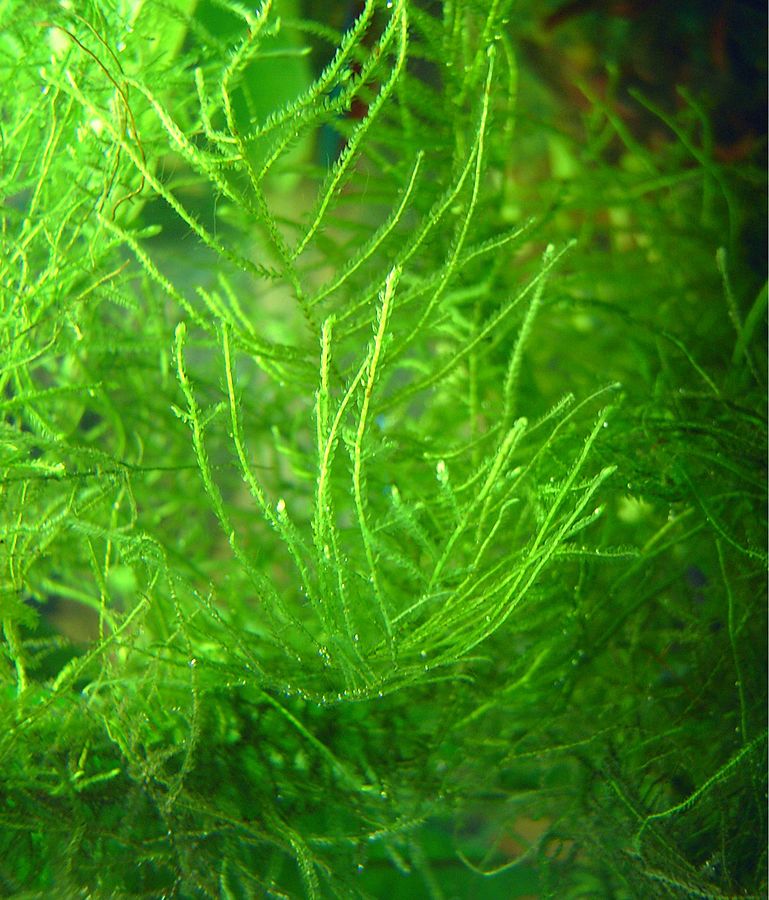First and foremost, what is Java moss? It’s not a weird name for a cup of Joe; in fact, it’s not coffee related at all. But it is a plant — and an easily manipulated one at that!
Java moss is most commonly seen in fish tanks, especially freshwater aquariums, because of its adaptability.
It’s a plant that is native to Southeast Asia (specifically the country of Java), but can be found in homes around the world, as its vibrant colours and lush strands make for a beautiful addition to any water project.

The ease of installation and care, and the benefits of growing Java moss in your tank make it a go-to plant for many aquarium hobbyists.
Contents
Grow, Java Moss Forrest, Grow!
While Java moss accepts all kinds of water and light qualities, it thrives best in 70 to 75 degree temperatures, but can survive up to 90 degrees.
You should plant your moss in an area with good current so debris doesn’t get caught in it and turn it brown.
Like most mosses, Java moss can thrive out of water as well – as long as it is kept moist regularly so it doesn’t dry out.
If you’re the impatient type, you will want to soak your Java moss with light to increase its growth rate. When in infancy, the more circulation it gets, the better.
Some growers have even been known to place their plant in a small controlled creek, or other source of running water, before installing their moss into a tank to ensure it is plenty healthy.
Just like your yard, the plants in your aquarium need fertilizing. There are several different ways to go about feeding your Java moss.
You might try liquid fertilizers that can simply be dropped into the water of your tank, and are full of iron, which is necessary for maintaining a healthy habitat.
There’s also aquarium soil and fertilizer tablets.
Aquarium soil is much like garden soil, but is better suited for the water environment than for growing your tomatoes.
It often has volcanic properties, which means you can dump it into your tank and “forget” about it for a few years. That’s how long it will be before it will need replacing.
Fertilizer tablets are like vitamins for your plants. While liquid is a short-term fertilizer and soil is a long-term one, tablets would fall somewhere there in the middle.
How to Grow Java Moss
Since Java moss does not require any special gravel or soil to be planted in (it will attach to most any base), you can get crazy creative with your display. You might try:
- Using driftwood to simulate a tree trunk, and growing small sections of Java moss to make it appear like you have a small underwater forest growing in your aquarium.
- Attaching your Java moss to the underside of a pre-grown plant to make it appear like the roots are more lush than normal.
- Creating a carpet or cave out of the Java moss and a flexible mesh.
Due to its clinging nature, Java moss is often used with a net or mesh to create a wall or carpet.
The moss is spread evenly across the base and then secured in place with a fish-friendly string or anchor.

It might grow slowly until it has established itself in place, but once it adapts, you have a popular and trendy new décor on your hands— or rather, in your tank!
Just A Little Off the Top
Some people would think that aquascaping — landscaping for your aquarium — would be as simple as pouring some rocks, fish, and a fistful of grass into a glass tank. But it’s not!
There are several styles that have gained popularity, and can create a delightful display in your home.
For those who prefer aquascaping to gardening, take a look at the list below for a few ideas for your next water project!
Biotope
This style is the closest to what you would find naturally occurring in the wild.
It is seen as one of the easiest to set up as it doesn’t require any additional research on whether your flora and fauna are compatible.
Believe it or not, this method is even used by scientists who would have an otherwise difficult time observing the natural habitat of their research subjects.
Iwagumi
Iwagumi is one of the more popular and also more complicated styles.
It was created by Takashi Amano, and follows the Golden Rule, or Rule of Thirds.
Each and every last detail is managed; from the number of rocks to the aesthetic balance of the tank.
Jungle
This style is pretty self-explanatory. It is similar to the Nature Aquarium, in that it is meant to mimic a specific landscape: a jungle.
While most popular with larger tanks where the scale of the method reaches its best potential, it is not impossible to achieve with a medium or smaller tank.
The Nature Aquarium:
Likely the most common style, the Nature Aquarium is what has flooded the aquascaping community of the internet.
This style is designed to create specific landscapes – mimicking mountains, forests, and hills.

The Walstad Method
This style is designed to require the least amount of maintenance and have the lowest care budget.
The general goal of using this method is to create as close to any habitat you would find in nature, in your tank.
While not the most uniform, and quite unlikely to win any organization awards, there is something beautiful to be found in the disorder of nature.
The Bene-fish of Growing Java Moss
More likely than not, your aquarium will have fish in it. Honestly, it’s best if it does, as Java moss is like any other plant in that it needs carbon dioxide to live and that is what fish exhale.
For many fish, separating the parents from the babies is crucial to the survival of the next generation.
By having Java moss in your tank, you give a place for the babies to hide out before they can grow to a size suitable for survival. Not only is it a sanctuary of safety, it can serve as a food source for fry, tadpoles, and some types of shrimp.
It also provides oxygen for your tank’s inhabitants, creating a symbiotic relationship.
Java moss is beneficial even if you have an uncycled tank, as it is great for lowering ammonia, nitrite, and nitrate levels.
Ultimately it comes down to FAFA: Filtration, Aeration, Fish homes, and Algae repellant!
Java moss can accomplish all four of these things while remaining more aesthetically pleasing than mechanical filters, clunky rocks, and air pumps.
Do you own Java moss?

